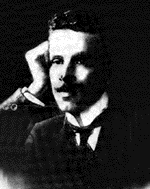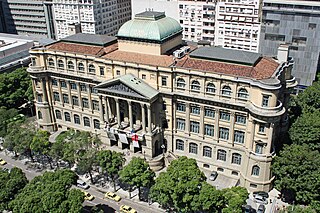History
First weekly period
The magazine was published on a weekly basis throughout the 1970s, and the 1980s, until August 1990. It was launched just before the 1970 World Cup, in order to fill the void of a national publication about the sport, and Pelé was featured on the cover of the first edition, which sold almost 200,000 copies. [3] The magazine defended the modernization of the administration of Brazilian football, and on issues number 23 and 24, in 1970, a series of articles by Michel Laurence and Narciso James proposed many changes, among them the creation of a forsooth national championship, which would be created in 1971. [4]
Consolidation
In the very beginning, the sales were a success: it sold over 100,000 weekly copies during the 1970 World Cup. But, after the end of the tournament, sales dropped to an average of 40,000 copies. [5] In order to reduce costs, in 1972 a pullout was created, starting with the number 131. Made with cheaper paper, it contained the "Tabelão", a listing of results and boxscores the magazine called "the Official Diary of Brazilian football". [6] It also featured "fresher" news, such as the weekend games, while the magazine itself brought more timeless articles, such as profiles and columns about games from the previous week. The pullout was canceled by late 1974.
Sales were sustained mostly by the same football lottery that later would be the target of an investigation by the magazine. With tips and collective bets, in 1972 Placar sold 250,000 copies one week because of an article about the lottery. [7]
In 1979, Milton Coelho da Graça, then-director of Placar, explained to Juca Kfouri, then-director of special projects who handled the section about the football lottery, that he had been noticing some coincidences when few people won. [8] Milton asked, and Kfouri went to Brasília and asked to see the winning tickets, but was denied with an allegation of bank secrecy. [9]
In the same year, Milton left Abril, and Kfouri was promoted to his post. Still suspecting about the lottery, every end of month he incited the newsroom, to no avail: "Who is man enough to uncover the unfairness of the soccer lottery?" [10] During another trip to Brasília, he asked again to see the winning tickets. This time, some were shown: "One put a triple bet in games other people would try to guess," Kfouri told later. "Corinthians x Juventus, triple. Flamengo x Olaria, triple. Vasco x Botafogo, Vasco. Atlético-PR x Coritiba, Coritiba. Inter x Livramento, triple. That's impossible. They play the triple bet in easy games and simple bets in hard ones. There's something strange going on here." [11]
The day after commenting about his suspicions in the newsroom, he found a volunteer for the task: Sérgio Martins. Kfouri gave him a one-year deadline, rigorously met: on issue 648, dated October 22, 1982, an extensive story was published on the case, denouncing corruption and match-fixing.
None of the 125 people named, among them players, directors, referees, managers and celebrities, was arrested. The lottery lost credibility, [12] which was never recovered again. Ironically, Placar sales were also negatively affected by the piece, since many readers bought the magazine exactly for its weekly lottery analysis.
End of weekly editions
Other efforts were made to try and reach new audiences, such as in 1984, when the magazine opened a larger room for sports other than football. The experience lasted from April to November, when the other sports, along with the slogan "All sports" ("Todos os esportes"), were dropped from the cover and started to receive less attention from the magazine. In September 1985, for the 800th edition, the traditional "Tabelão" section, with the listing of local boxscores and results from abroad, was removed because it was deemed too expensive. [13] One year later, in September 1986, the section made its comeback after protests of over 600 readers, [14] by mail and phone. At first, the section covered just the 1986 Brazilian League, [15] but later, gradually, it was extended to other tournaments. With stagnated sales numbers since 1985, [16] another effort was made in 1988, with a bigger format, less pages and a cheaper paper, in a phase known as Placar Mais. In the outset, it became Abril's best-selling magazine, even though it turned a loss if too many copies were sold, hence a limit was set. [13]
The good times didn't last long, though, since the magazine never sold many ad pages. The fatal blow came with the Brazilian flop in the 1990 World Cup, that was aggravated by the terrible campaigns of the bigger teams in the 1990 Paulista League (small clubs Bragantino and Novorizontino made the finals that year) and the controversial finals of the Carioca League (the title was decided in the courts). Placar always turned a profit with commemorative editions of titles, but that year this option wasn't available, and Abril decided to stop investing in a weekly football magazine. [17]
After years of bad results (between 1979, and 1995, the magazine's results were in the black for just three years), cuts were made in the newsroom, [18] and the magazine was no longer published weekly. Just one year earlier, the letter from the editor of the 1,000th issue stated that Placar reached that milestone "healthy" and with average sales of 127,000 copies. [19]
Thematic editions
A special about Pelé's 50th birthday, had sales of 99,700 of the 100,000 copies that were printed. [20] The special edition even earned Placar an Esso Prize, the third the magazine has won. [21]
The success of that edition made Kfouri propose that Abril kept a line of thematic magazines with a small newsroom. Abril approved the idea, as long as there was no periodicity, but the timetable for 1991 called for 12 issues. "We made the 12," recalled Kfouri. "No one mentioned the magazine as 'Placar, Abril's monthly football magazine', but it was a fact that it was monthly. And its results began to live in the black ink." [17] The only months when there was no numbered editions were December 1993, July 1994, August 1994 and February 1995. The magazine maintained its critic position of the Brazilian football brass, which made the president of Federação Paulista de Futebol, Eduardo José Farah, deny the publication's photographers entrance on the field for the 1991 Brazilian League finals, between Bragantino and São Paulo, in Bragança Paulista. [22]
During the 1994 World Cup, special editions were launched after every game the Brazil national team played. They were produced directly in Brazil with inferior paper, but the sales, weak for the first edition, grew steadily after each game. Starting with the fourth special edition, the sales were satisfactory, and the commemorative edition after the title sold over 500,000 copies. [13] The series produced a profit of 500,000 dollars. [23]
This was the era when the magazine had its higher figure for a price: in August 1993, it cost 290,000 cruzeiros reais. [13]
"Futebol, sexo e rock 'n roll"
The success generated by the 1994 World Cup editions and the Brazilian victory itself triggered big changes starting April 1995, just after the magazine celebrated its 25th anniversary. Those changes included the exits of every journalist of the newsroom, except Manoel Coelho and Paulo Vinicius Coelho. [24] Approximately 1 million dollars were invested, with young adults as a target. [25] The new slogan would be "Futebol, sexo e rock 'n roll" ("Football, Sex and Rock 'n Roll"). The format was also changed, to 27,5 cm x 35,8 cm, [3] and, for the first time in its history, Placar sold subscriptions. [25] American designer Roger Black was charged with the graphical project. The first edition of the new phase, with Edmundo as cover athlete, sold 350,000 copies. [26]
Just a few months later, Kfouri left Placar and Abril because of interferences by the brass with the magazine. To Abril, it was not interesting to denounce Brazilian soccer brass in a pullout that circulated with the monthly editions, because it feared for the TV contracts TVA, also from Abril, had. [27] Roberto Civita, Abril's president, offered Kfouri the name of the magazine for a price, since Placar didn't turn a profit and the publisher would also get rid of the possibility of being sued again, but the negotiations didn't go any further. [28]
During the next few years, a few visual (such as yet another new format, to 22,6 cm × 29,9 cm, in 1996) [3] and content (football once again was the main theme) adjustments were made. During the 1998 World Cup, Placar again published special editions after each Brazilian game, but, this time, many professionals were sent to host country France — even the page design was made there. The huge costs and the sagging sales (compared to the previous World Cup) made for a flop.
Once again, Placar was being published sporadically, albeit in a larger quantity than the previous "sporadic period", in 1990. Each special, even the simultaneous ones, was numbered. But in May 2003 the magazine was back to a monthly periodicity, and the specials no longer followed the numbering. In March 2008, an article about TV color man and former player Casagrande's internment raised a controversy, [29] with journalists defending and criticizing [30] the magazine's posture.
Francisco Sacco Landi, better known as Chico, was a racing driver from São Paulo, Brazil. He participated in six Formula One World Championship Grands Prix, debuting on September 16, 1951. He scored a total of 1.5 championship points, awarded for his fourth-place finish in the 1956 Argentine Grand Prix, a drive he shared with Gerino Gerini. He was the first Brazilian ever to take part in a Formula One Grand Prix, and also the first to score points.

Alfonso Darío Pereyra Bueno is a Uruguayan former football player. Having played as a midfielder for Club Nacional de Football in his home country, he reached stardom playing for São Paulo FC as a centre-back along with Oscar. He is still remembered and revered as one of the best centre-backs in the history of Brazilian football.

Veja is a Brazilian weekly news magazine published in São Paulo and distributed throughout the country by media conglomerate Grupo Abril. It is the leading weekly publication in the country and one of the most influential outlets of the Brazilian printed media. Veja publishes articles on politics, economics, culture, world events, entertainment, and war. It also regularly includes editorial pieces related to themes like technology, ecology, and religious debate. It has recurring sections on cinema, television, practical literature, music, and guides on diverse subjects. It has been described as politically aligned with right-wing movements, though it does not describe itself as such.

Editora Abril is a major Brazilian publisher and printing company and one of the biggest media holdings in Latin America. The company was founded in 1950 by Victor Civita in São Paulo and is now part of Grupo Abril.

Partido da Imprensa Golpista is a term used by left-wing Brazilian websurfers since 2007 to characterize an alleged attitude of the Brazilian mass media towards President Luiz Inácio Lula da Silva during the 2006 presidential election. The term was popularized by journalist Paulo Henrique Amorim in his blog. Whenever he uses the term, Amorim writes it with an "i" in lowercase as a pun with the name of the web portal "iG". where he was a journalist before he was dismissed on March 18, 2008, which he describes as a process of "ideological cleansing".

Saul Alves Martins was a Brazilian anthropologist and folklorist, professor of Federal University of Minas Gerais (UFMG). Formed in Social Sciences, master and doctor in the area and for years devoted himself to the study and teaching of anthropology, with an emphasis on folklore and the tradition of Minas Gerais.
Samuel Wainer was a Brazilian journalist and author. Wainer was born into a Jewish family from Bessarabia, more precisely in the Edineț District, then part of the Russian Empire. His family immigrated to Brazil in 1912, settling in São Paulo. He would later found and direct the Diretrizes magazine and the Última Hora newspaper. He was married to Danuza Leão, Brazilian journalist and model, sister of Nara Leão. They had a son, Samuel Wainer Filho, who was also a journalist. He died in 1984 in a car accident with a camera operator. Wainer also had two more children: plastic artist Débora "Pinky" Wainer and film producer Bruno Wainer.

Mário Cochrane de Alencar was a Brazilian poet, short story writer, journalist, lawyer and novelist. He was one of the children of famous novelist José de Alencar.

Eugênio Bucci (Orlândia) is a Brazilian journalist, known for his works at many Brazilian publications and also for his time as president of Radiobras.

The São Paulo Prize for Literature is a Brazilian literary prize for novels written in the Portuguese language and published in Brazil. It was established in 2008 by the Secretary of Culture for the State of São Paulo. Though not as old as other literary prizes in Brazil, such as the Machado de Assis Prize, the São Paulo Prize has quickly risen in prestige. For example, in 2011, there were 221 submissions for the prize. This rapid rise in popularity is partly because of the large cash prize. Every year two prizes of R$200,000 each are awarded—one for the best novel of the year by an established author, and the other for the best novel of the year by a debut author—making the São Paulo Prize the largest prize for a published work in Brazil, and one of the largest literary prizes in the world. Ten finalists are listed for each award, during the Festival da Mantiqueira, and the winners are announced on the first Monday of August in the Museum of the Portuguese Language.
This entry presents the two main national and official competitions between state champions that preceded the Taça Brasil de Futebol, namely, the 1920-CBD Champions Tournament and the 1937-FBF Champions Tournament, which are two different competitions, only with the same intention, challenge between state champions.

Events in the year 1967 in Brazil.

The history of the book in Brazil focuses on the development of the access to publishing resources and acquisition of the book in the country, covering a period extending from the beginning of the editorial activity during colonization to today's publishing market, including the history of publishing and bookstores that allowed the modern accessibility to the book.
Grupo Bloch, also known as Empresas Bloch, was a Brazilian media conglomerate, founded by Ukrainian businessman Adolpho Bloch's family after their arrival in Rio de Janeiro in 1922, when they created Joseph Bloch & Filhos company. The company, which published pamphlets and other printed material, also started to print magazines. Thus, in 1953, the company launched Manchete magazine. With its successful launch, the publishing division of Bloch Editores was established.

Maria Rita Kehl,ORB is a Brazilian psychoanalyst, journalist, poet, essayist, cronista and literary critic. In 2010, she won the Jabuti Award in the Education, Psychology and Psychoanalysis category and the Human Rights Award from the Brazilian government in the Media and Human Rights category.

Bárbara Pereira de Alencar was a Brazilian merchant and revolutionary, who was a major figure in the Pernambucan revolt. She was briefly the president of the Republic of Crato, which was set up in revolt against the Brazilian government. Within 8 days she was captured and tortured by the monarchy, making her the first political prisoner in the history of Brazil.
Douglas Quinta Reis was a Brazilian editor and publisher, known for popularizing RPGs and comic books in Brazil.

Renata Pallottini or Renata Monachesi Pallottini was a Brazilian playwright, essayist, poet, theater professor and translator. She was an award-winning author of poetry, plays, essays, fiction, children's literature, theater theory, and television programs who was notable in the Brazilian literary and theater scenes. In a considerable part of her production, it is possible to identify the questioning and the combat against the social values that delimitated the woman's role in society.

The history of the press in Brazil begins in 1808 with the arrival of the Portuguese royal family in Colonial Brazil, when all forms of press activity were prohibited – including the publication of newspapers, books, or pamphlets. This was a peculiarity of Portuguese America, as press was present in other European colonies on the continent since the 16th century.












